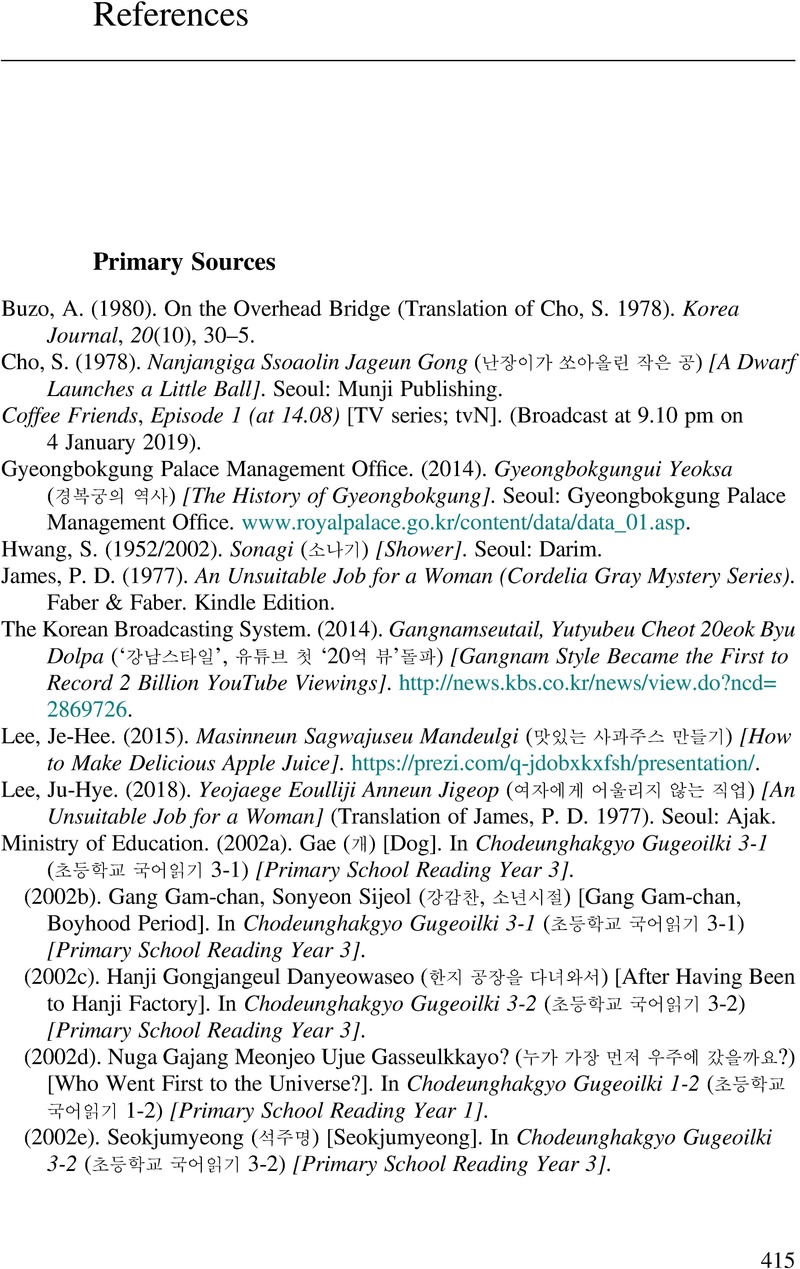Book contents
- Frontmatter
- Contents
- Figures
- Tables
- Preface
- Conventions and Abbreviations
- Romanisation
- 1 Introduction to a Systemic Functional Grammar of Korean
- 2 The Grammar of Groups and Phrases in Korean
- 3 The Grammar of Interpersonal Meaning in Korean: mood
- 4 The Grammar of Experiential Meaning in Korean: transitivity
- 5 The Grammar of Textual Meaning in Korean: theme
- 6 The Grammar of Logical Meaning in Korean: clause complexing
- 7 Two Applications
- References
- Index
- References
References
Published online by Cambridge University Press: 16 March 2023
- Frontmatter
- Contents
- Figures
- Tables
- Preface
- Conventions and Abbreviations
- Romanisation
- 1 Introduction to a Systemic Functional Grammar of Korean
- 2 The Grammar of Groups and Phrases in Korean
- 3 The Grammar of Interpersonal Meaning in Korean: mood
- 4 The Grammar of Experiential Meaning in Korean: transitivity
- 5 The Grammar of Textual Meaning in Korean: theme
- 6 The Grammar of Logical Meaning in Korean: clause complexing
- 7 Two Applications
- References
- Index
- References
Summary

- Type
- Chapter
- Information
- Korean GrammarA Systemic Functional Approach, pp. 415 - 421Publisher: Cambridge University PressPrint publication year: 2023

